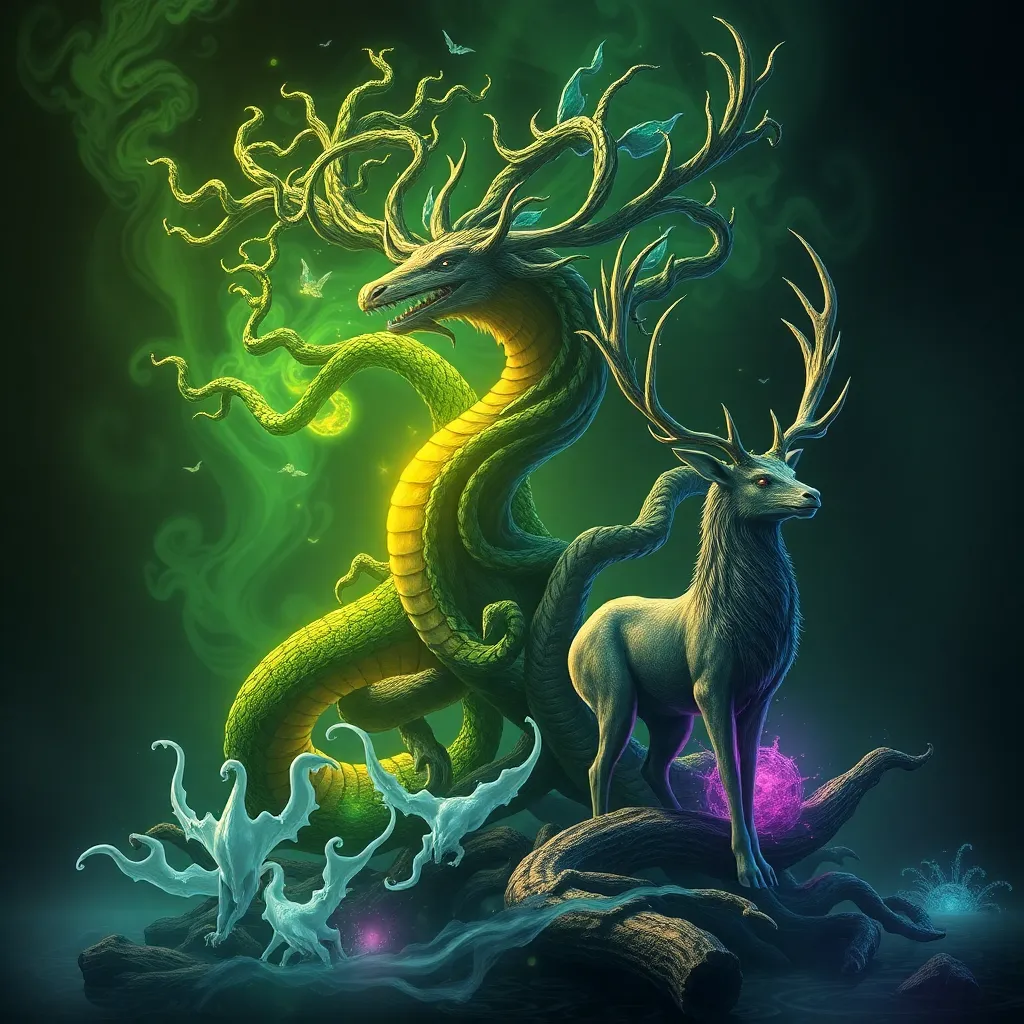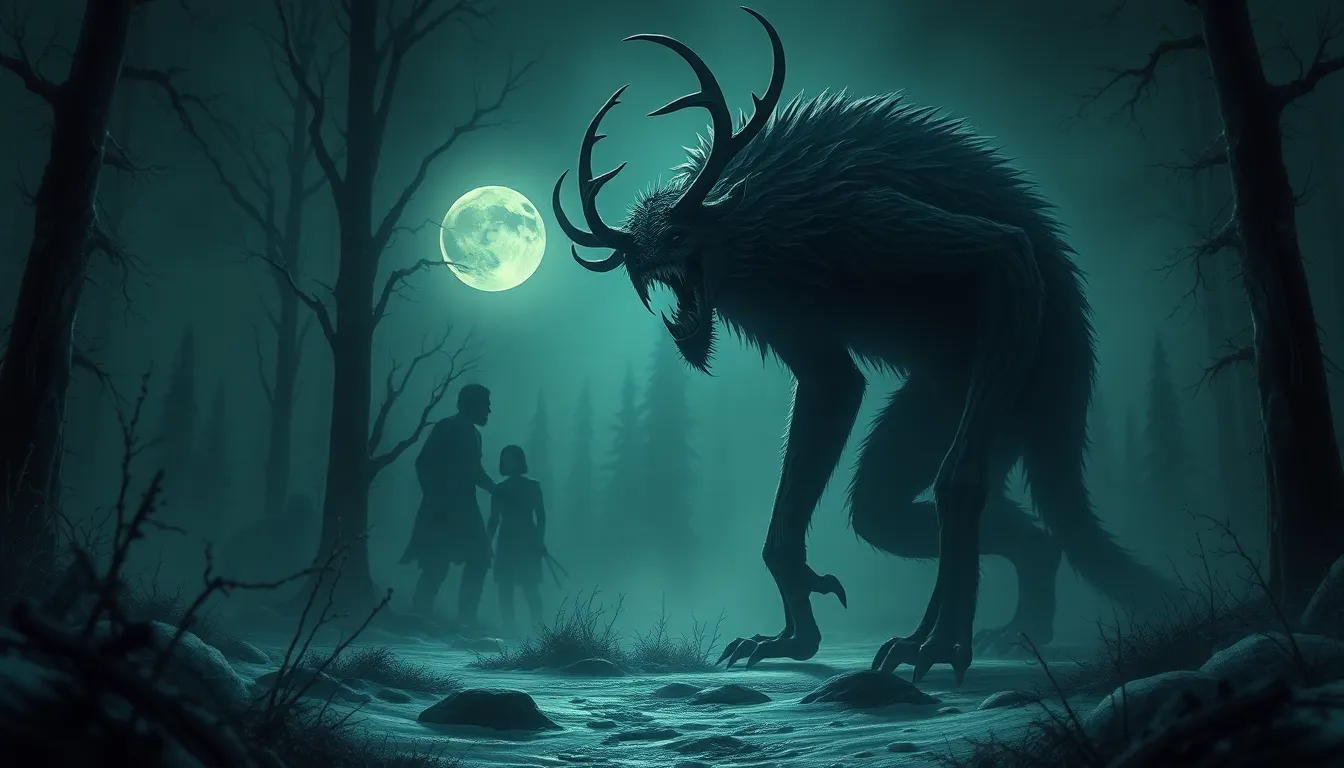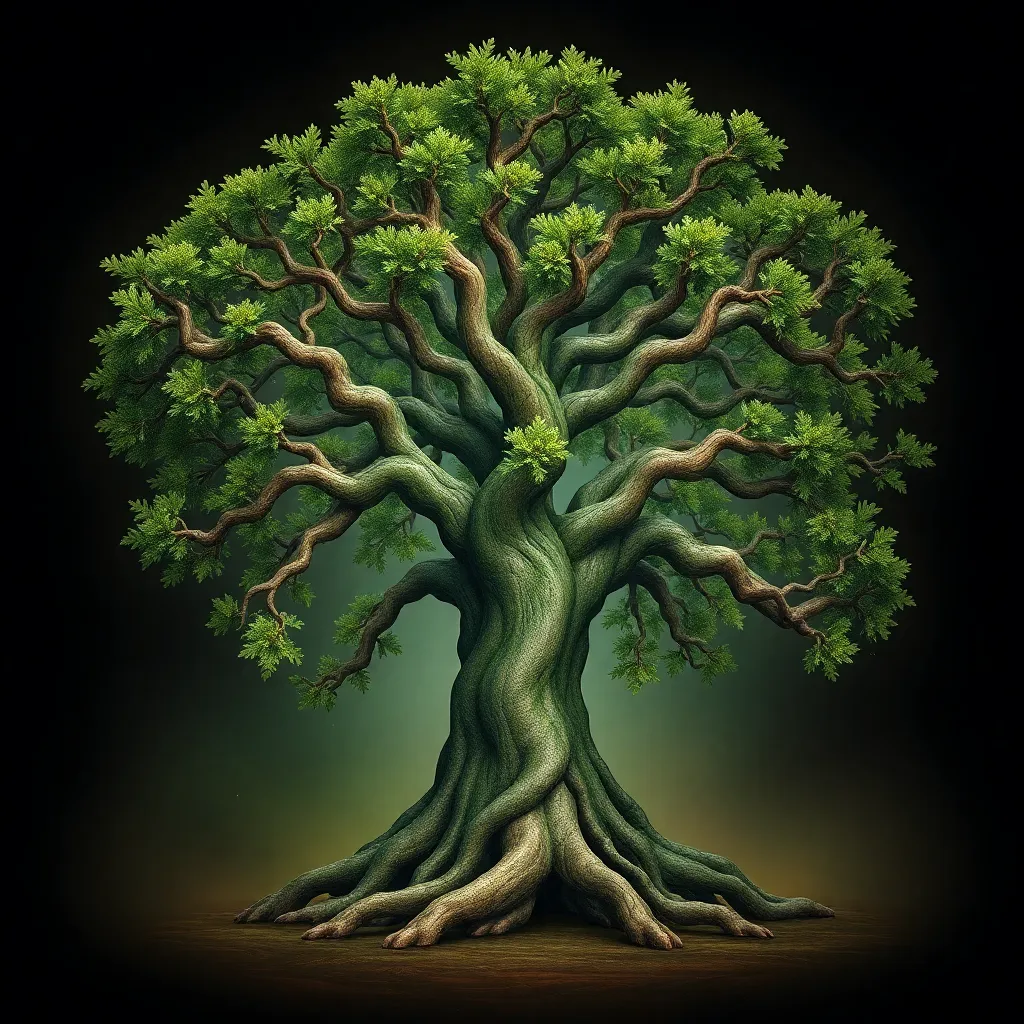Mythical Beasts of Yggdrasil: From the Serpent Jormungandr to the Stag Eikthyrnir
I. Introduction
Yggdrasil, the World Tree, is a central figure in Norse mythology, symbolizing the cosmos and the interconnectedness of all beings. This immense tree connects various realms, serving as a bridge between the worlds of gods, humans, and other mythical creatures. Within this rich tapestry of lore, mythical beasts play a pivotal role, embodying various aspects of existence and the forces of nature.
This article aims to explore some of the key creatures associated with Yggdrasil, delving into their origins, symbolism, and significance within the mythological narrative.
II. Yggdrasil: The World Tree
Yggdrasil is often described as a massive, sacred ash tree that extends across the nine realms of Norse cosmology. Its roots and branches intertwine, creating a complex system that sustains life and connects diverse beings.
A. Description and significance of Yggdrasil
The tree is typically depicted as having three main roots that reach into different realms:
- One root stretches to Hel, the realm of the dead.
- Another reaches to Jotunheim, home of the giants.
- The third extends into Asgard, the realm of the gods.
Yggdrasil is not just a physical entity; it represents the cycle of life, death, and rebirth, a vital element of the Norse understanding of existence.
B. The nine realms connected to Yggdrasil
The nine realms are:
- Asgard – Home of the Aesir gods.
- Midgard – The realm of humans.
- Vanaheim – Home of the Vanir gods.
- Jotunheim – Land of the giants.
- Alfheim – Realm of the light elves.
- Svartalfheim – Home of the dark elves or dwarves.
- Niflheim – Land of ice and mist.
- Muspelheim – Realm of fire.
- Hel – The underworld.
C. The role of mythical beasts in maintaining the balance of the cosmos
Mythical beasts associated with Yggdrasil serve various roles, from guardians of the tree to embodiments of chaos and destruction. Their interactions often reflect the delicate balance of creation and destruction inherent in Norse cosmology.
III. Jormungandr: The World Serpent
Jormungandr, also known as the Midgard Serpent, is one of the most iconic creatures in Norse mythology. It is said to be so large that it encircles the earth, biting its own tail.
A. Origin and characteristics of Jormungandr
Jormungandr is the offspring of the trickster god Loki and the giantess Angerboda. Its immense size and strength make it a formidable creature, feared by gods and men alike.
B. The prophecy of Ragnarok and its connection to Jormungandr
According to prophecy, during Ragnarok, the end of the world, Jormungandr will release its tail and rise from the ocean to battle Thor, the god of thunder. This cataclysmic event signifies the destruction and rebirth of the world.
C. Symbolism of the serpent in Norse mythology
The serpent is often seen as a symbol of chaos and danger, representing the primal forces of nature. Jormungandr’s eternal struggle with Thor embodies the conflict between order and chaos.
IV. Eikthyrnir: The Stag of Valhalla
Eikthyrnir is a majestic stag that resides in Valhalla, the hall of slain warriors. Its presence is both awe-inspiring and symbolic.
A. Description of Eikthyrnir and its habitat
Eikthyrnir is described as having immense antlers, from which drip water that nourishes the roots of Yggdrasil. It stands atop Valhalla, overlooking the warriors who await the final battle.
B. The significance of Eikthyrnir in Asgard and Valhalla
The stag represents the cycle of life and death, as its antlers symbolize regeneration and the sustenance of life. Eikthyrnir’s existence in Valhalla reflects the valor and glory of those who have died in battle.
C. The connection between Eikthyrnir and the cycle of life and death
By nourishing Yggdrasil, Eikthyrnir plays a crucial role in the continuity of life, embodying the interconnectedness of all beings in the cosmos.
V. Nidhogg: The Dragon of the Underworld
Nidhogg is a fearsome dragon that gnaws at the roots of Yggdrasil, representing decay and the inevitability of death.
A. Nidhogg’s role in gnawing at the roots of Yggdrasil
This dragon’s relentless activity signifies the destructive forces that threaten the stability of the world tree, reminding all beings of their mortality.
B. Symbolism of Nidhogg in relation to decay and destruction
Nidhogg embodies the darker aspects of existence, showing that decay is an essential part of life. Its actions serve as a counterbalance to the life-giving properties of Yggdrasil.
C. The dragon’s interaction with other creatures in Norse mythology
Nidhogg is often depicted as interacting with other creatures, including Ratatoskr and the eagle at the top of Yggdrasil, creating a network of communication and conflict within the mythological landscape.
VI. Ratatoskr: The Squirrel Messenger
Ratatoskr is a diminutive yet significant creature, serving as a messenger between the various beings of Yggdrasil.
A. Overview of Ratatoskr’s role in Norse mythology
This energetic squirrel scurries up and down Yggdrasil, delivering messages between the eagle that resides at the top of the tree and Nidhogg at the roots.
B. The significance of communication in the mythology through Ratatoskr
Ratatoskr’s role highlights the importance of communication and the flow of information in maintaining relationships among the different realms and beings.
C. Interaction with other beasts, particularly Nidhogg and the eagle at the top of Yggdrasil
Through his interactions, Ratatoskr embodies the themes of gossip and rivalry, showcasing the complexities of relationships among the creatures of Yggdrasil.
VII. Other Notable Beasts of Yggdrasil
Beyond the more famous creatures, Yggdrasil is home to several other notable beasts that contribute to the mythological narrative.
A. Fenrir: The monstrous wolf and its significance
Fenrir, another offspring of Loki, is a monstrous wolf destined to play a crucial role during Ragnarok, symbolizing the uncontrollable forces of nature and destiny.
B. The Aesir and Vanir gods’ connection to various beasts
The gods of Asgard often interact with various creatures, each embodying different aspects of life and nature, reinforcing the idea of interconnectedness.
C. Overview of lesser-known creatures and their roles
Other lesser-known beasts, such as the various elves, dwarves, and spirits, also inhabit the realms connected to Yggdrasil, each adding depth to the mythological landscape.
VIII. Conclusion
The mythical beasts associated with Yggdrasil are not merely fictional creations; they embody deep philosophical and existential themes within Norse mythology. From Jormungandr’s chaotic nature to Eikthyrnir’s life-sustaining presence, these creatures illustrate the complex interplay of creation and destruction in the cosmos.
These beings have left an enduring legacy in modern culture, influencing literature, art, and popular media. Their stories invite us to explore the rich tapestry of Norse mythology further, revealing the timeless truths that resonate across cultures and eras.
In conclusion, the exploration of these mythical beasts offers a glimpse into the depths of human understanding




